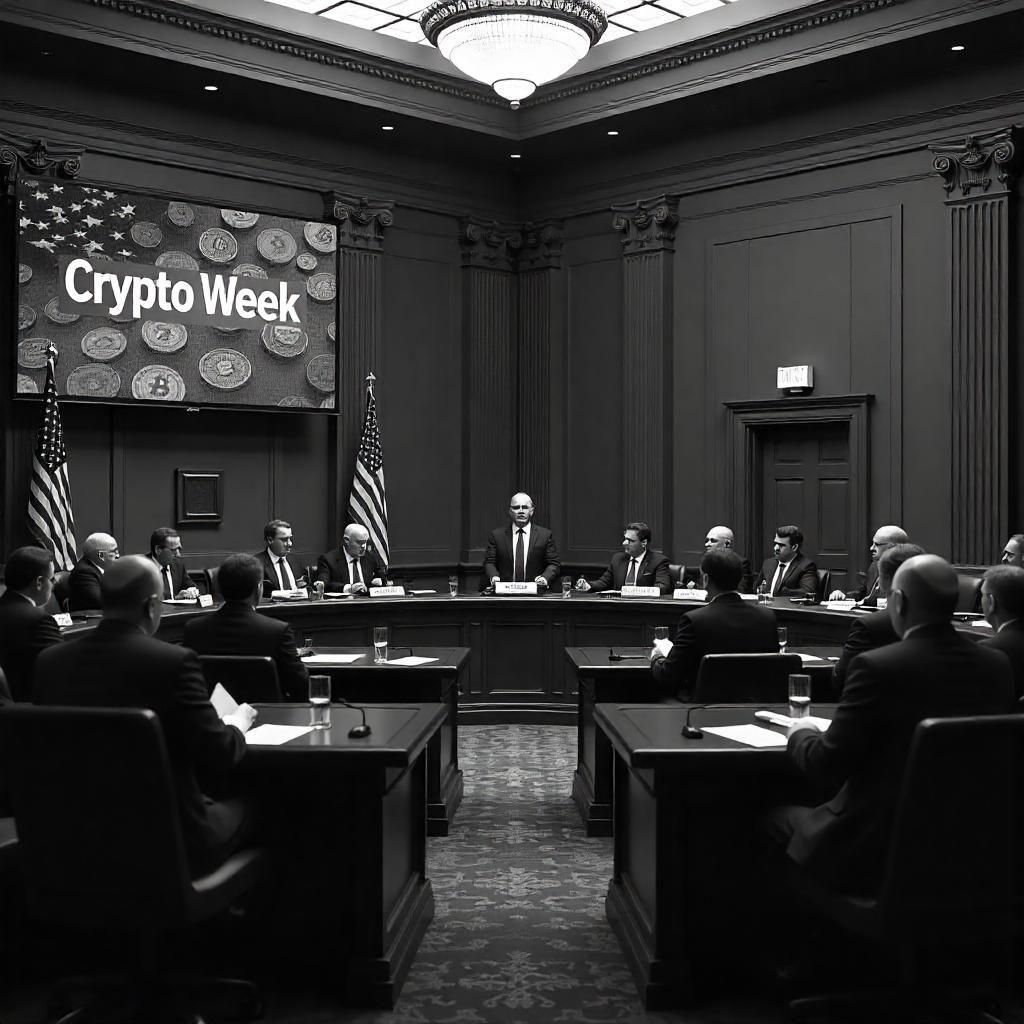What Are Utility-Driven NFTs?
NFTs—or non-fungible tokens—are evolving beyond mere collectibles. While early NFT hype was dominated by profile pictures and speculative digital art, a more functional iteration is emerging: utility-driven NFTs. These are NFTs embedded with real-world use cases, offering holders tangible benefits beyond ownership. From loyalty programs and gaming perks to concert tickets and backstage passes, utility NFTs have taken center stage in 2025’s blockchain innovation wave.
At their core, utility NFTs function as programmable digital assets. Instead of just representing ownership of a digital file, they come attached with rights, access, or services. This utility is encoded directly into the smart contract of the NFT. It could be anything from early access to products, invitations to private events, or token-gated online content. The possibilities are expansive and growing as industries from entertainment to real estate experiment with this new layer of functionality.
In the event space, utility NFTs are transforming how tickets are issued, resold, and experienced. NFT-based tickets offer verified, immutable ownership on-chain, eliminating counterfeiting and scalping. More than that, they create a lasting connection between event organizers and attendees. These NFTs often come bundled with VIP perks, digital collectibles, and post-event access, offering fans more than just admission—they offer a complete experience.
Core Utility Features
Utility-driven NFT tickets bring a suite of features that traditional tickets cannot match. The most fundamental benefit is verifiability. Since NFT tickets live on a blockchain, their authenticity can be validated instantly by anyone. This removes the long-standing issue of ticket fraud, where scalpers or malicious actors sell fake or duplicated tickets to unsuspecting fans.
These tickets are programmable, which allows organizers to include conditions directly into the token’s smart contract. For example, they can limit or ban resale, enforce royalties on secondary market trades, or set expiration dates. This gives event organizers unprecedented control over the ticket lifecycle, curbing issues like scalping and uncontrolled price inflation on third-party marketplaces.
Utility NFTs are also inherently transferable—users can send them to others, trade them on marketplaces, or even gift them. This peer-to-peer transferability simplifies last-minute logistics and opens up new forms of community engagement. Some platforms even support token-gating: where holding a ticket NFT unlocks exclusive online content, merchandise discounts, or early access to future events.
For fans, one of the most compelling features is that these NFTs are collectible. A concert ticket no longer ends when the show does—it becomes a digital memento, often enriched with custom visuals, artist messages, or unlockable content. These NFTs can retain value long after the event, creating new opportunities for engagement and even appreciation in resale markets.
Platform Spotlight
As the event industry embraces the transformative power of NFTs, several platforms have emerged as frontrunners in revolutionizing ticketing. These platforms not only combat issues like fraud and scalping but also enhance fan engagement and provide artists with greater control over their work. Let’s delve into some of the most prominent NFT ticketing platforms making waves in 2025.
SeatlabNFT stands out for its commitment to creating a fairer ticketing system. Built on the NEAR Protocol, a carbon-neutral blockchain, it offers event organizers tools to control ticket resale, distribute rewards, and engage directly with fans through NFTs. Features like capped resale prices and smart contract-enforced royalties ensure that artists and organizers benefit from secondary sales. The platform also allows for the attachment of real-life claimable items to collectibles, enhancing the fan experience.
YellowHeart is a pioneer in NFT ticketing, specializing in live entertainment and music events. It enables artists and event organizers to issue tickets as NFTs, ensuring authenticity and adding exclusive perks like VIP access and digital collectibles. With blockchain-based verification, YellowHeart prevents counterfeiting while offering a seamless ticketing experience. The platform also allows artists to set rules for resale, ensuring they benefit from secondary market transactions.
GUTS Tickets operates on the GET Protocol and is known for its commitment to eliminating ticket fraud and scalping. It issues non-transferable digital tickets, ensuring that fans pay the original ticket price. The platform also offers a controlled resale system, allowing fans to sell tickets at the same price they bought them, ensuring fairness. With over 600,000 NFT tickets sold, GUTS is expanding its reach and providing a transparent and secure ticketing solution.
Wicket is an Italian NFT ticketing platform that offers digital smart tickets, sales, resale, and analytics. It aims to eliminate secondary ticketing issues in the Italian market by selling verifiable NFT tickets. Wicket leverages dynamic QR codes and online ticketing to ensure ticket authenticity and prevent fraud. The platform also provides analytics tools to help event organizers understand ticket sales and audience behavior.
Oveit is a platform that aids customers’ experiences by transforming traditional tickets into NFTs. It offers numerous rewards and fair payments for purchasers, allowing users to program royalties in NFT tickets during secondary sales. The platform is designed to be user-friendly, requiring no deep blockchain knowledge, making it accessible for both organizers and attendees.
These platforms exemplify the diverse approaches to integrating NFTs into event ticketing, each offering unique features tailored to enhance the experience for both organizers and attendees.
Step-by-Step Guide to Launching an NFT Ticketing Platform
Embarking on the journey to launch an NFT ticketing platform is both an exciting and intricate endeavor. This section provides a comprehensive, step-by-step guide to help you navigate the process, ensuring that your platform is secure, user-friendly, and aligned with industry standards.
Conduct Thorough Market Research
Before diving into development, it’s crucial to understand the landscape of NFT ticketing. Analyze existing platforms, identify gaps in the market, and gather insights from potential users and event organizers. This research will inform your platform’s features, design, and unique value propositions.
Define Core Features and Functionalities
Based on your research, outline the essential features your platform will offer. Key functionalities typically include NFT ticket minting and management, smart contract integration for ticket issuance and resale, user authentication and wallet integration, event creation and management tools, secondary market for ticket resale, and analytics and reporting tools for event organizers. Prioritize these features based on user needs and technical feasibility.
Choose the Right Blockchain and Smart Contract Standards
Selecting an appropriate blockchain is pivotal. Ethereum, with its robust security and widespread adoption, is a popular choice. However, consider factors like transaction fees and scalability. For instance, Polygon offers lower transaction costs, which can be advantageous for high-volume ticketing. Implementing smart contracts using standards like ERC-721 or ERC-1155 ensures that each ticket is verifiable and tamper-proof. These contracts should also include features like resale royalties and transfer restrictions, depending on your platform’s policies.
Develop the Platform’s Architecture
Design a scalable and secure architecture for your platform. This includes frontend development using frameworks like React.js or Vue.js, backend development with Node.js or Python, blockchain integration with Web3.js or Ethers.js, and database management with PostgreSQL or MongoDB. Ensure that the architecture supports seamless interactions between users, event organizers, and the blockchain.
Implement Payment Gateways
Integrate payment solutions to accommodate both fiat and cryptocurrency transactions. Platforms like Stripe or PayPal can handle traditional payments, while services such as Coinbase Commerce or Binance Pay facilitate crypto transactions. Offering multiple payment options enhances accessibility for a broader audience.
Conduct Rigorous Testing
Before launching, perform extensive testing to identify and resolve any issues. This includes unit testing, integration testing, user acceptance testing, and security audits. Utilize tools like Jest, Mocha, and MythX for testing and auditing purposes.
Launch the Platform
Once testing is complete, prepare for launch. Consider releasing a Minimum Viable Product (MVP) to gather initial user feedback and make necessary adjustments. Develop a comprehensive marketing strategy that includes social media campaigns, influencer partnerships, SEO and content marketing, and community engagement. Monitor the platform’s performance post-launch and be prepared to address any issues promptly.
Provide Ongoing Support and Updates
After launch, it’s essential to offer continuous support to users and event organizers. Establish a dedicated support team to handle inquiries and resolve issues. Regularly update the platform to introduce new features, improve security, and enhance user experience. Stay informed about industry trends and technological advancements to keep your platform competitive.
Launching an NFT ticketing platform requires careful planning, technical expertise, and a user-centric approach. By following these steps, you can create a platform that not only meets the needs of event organizers and attendees but also stands out in the evolving landscape of digital ticketing.
Benefits for Organizers & Attendees
Utility-driven NFTs transform event ticketing from a simple exchange into a powerful engine for engagement, control, and long-term value. Let’s explore how both organizers and attendees stand to gain.
For Event Organizers
With blockchain-based verification, every NFT ticket is unique and immutable. This virtually eradicates counterfeit tickets and scalping bots. Smart contracts can enforce resale limits or price caps, ensuring tickets remain accessible to genuine fans. Platforms like YellowHeart allow organizers to set rules such as “no resale” or capped resale price, safeguarding interests and reputation.
Unlike traditional secondary sales, NFT tickets can be programmed to automatically send a royalty percentage to event creators with every resale. This creates a sustainable revenue stream—artists and organizers continue to benefit even after the main event.
NFTs act as a digital handshake—tickets become channels through which organizers can communicate directly. Whether it’s sending VIP updates, exclusive merch deals, or reminders, blockchain ownership ensures messaging hits the right wallets—without intermediaries.
No physical printing, no complex distribution logistics—just mint and send. Blockchain automates the verification process, slashing administrative overhead and speeding up the ticketing workflow.
Every ticket transfer, scan, or interaction is recorded on-chain. Organizers gain insights into who attended, when they arrived, resold, or even how they engaged—a treasure trove for improving future event strategies.
NFT tickets carry collectible, sentimental value. Fans keep them as digital souvenirs, showcasing loyalty. This opens doors for limited-edition drops, special perks, and post-event tie-ins—all reinforcing community and brand equity.
For Attendees
No more wondering if your ticket is genuine. NFT tickets are verifiable in real time via the blockchain, eliminating worries about fakes, duplicates, or scanning errors.
Need to cancel? NFT tickets can be resold peer-to-peer with complete ownership transparency. Whether resale is capped or not is clear and trust is built into the system—all without hidden fees.
Owning an NFT ticket can act like a VIP badge—unlocking backstage access, merch drops, exclusive content, or artwork. This shifts events from passive attendance to interactive, memorable experiences.
These tickets aren’t just passes—they become collectibles. Fans can hold, trade, and showcase them. Plus, thanks to provable scarcity, some tickets may even appreciate in value over time.
Scan your NFT in-app or via your digital wallet—no paper, no line, no hassle. It’s a frictionless, faster entry process that aligns with modern digital habits.
Going digital eliminates paper waste and shipping emissions. Fans can feel good knowing their ticket supports sustainability—especially when built on low-energy blockchains.
Risks & Considerations
While utility-driven NFTs offer transformative potential, it’s essential to understand the associated risks. Addressing these head-on ensures responsible implementation and sustainable adoption across the industry.
Blockchain networks remain vulnerable to bots, crashes, and scams. High-demand NFT drops often attract bots that buy in seconds, locking out real fans. In one notorious Gucci NFT launch, bots scooped collections before legitimate buyers could participate. Overloaded blockchain traffic can cause network crashes and exorbitant gas fees—sometimes multiples of the ticket value. Brands like Adidas refunded users after failed mint attempts due to high fees.
NFTs also carry broader fraud and wash trading vulnerabilities. The Treasury Department highlights scams and money laundering through NFT trades, warning that these markets are particularly vulnerable. In fact, studies found automated wash trades inflated on-chain volumes by millions, stealing value and muddying liquidity transparency.
On-chain data brings regulatory and legal risk. Intellectual property rights must be explicitly addressed; simply owning a digital ticket does not include copyright in images or content. Clear terms of resale, media usage rights, privacy of data, and cross-border compliance (e.g. GDPR, MiCA) are mandatory. Many NFT ticketing business models allocate 15–30 percent of budgets to licensing and compliance, significantly more than traditional ticketing.
Environmental and user-experience challenges also loom. Blockchains use varying energy models, and older proof-of-work systems are highly energy-intensive. Even proof-of-stake and layer-2 chains involve carbon footprints and hardware usage concerns. Complex wallet setup, gas fee payments, and cross-chain fragmentation add steep learning curves for average users.
Privacy and data exposure are crucial. Blockchain’s auditability means ticket ownership and event attendance can be public—creating risks if buyer identities are linked. Technologies like zero-knowledge proofs help, but these add complexity.
Finally, the liquidity and speculation risk warrants caution. Secondary markets may remain shallow, so users might struggle to sell tickets at fair prices. Combined with speculative price bubbles, this volatility can create a negative experience.
Understanding these risks allows for proactive mitigation: using layer-2 chains, smart contract audits, compliance strategies, privacy-preserving tech, and clear communications builds trust. Utility NFTs aren’t risk-free—but with thoughtful implementation, they can be powerful tools.
Future Outlook & Emerging Trends
Utility-driven NFT ticketing is set to evolve beyond static entry passes into dynamic, interactive experiences. Leaders in the space are already embracing several key trends that promise to redefine how fans engage with events.
One major trend is the rise of phygital integration—blending physical event access with digital perks. Imagine an NFT ticket that grants backstage entry while unlocking exclusive AR overlays during the event or unlocks collectible digital merch post-show. Platforms like Coinmetro highlight this shift, describing future NFTs as gateways to phygital experiences, virtual environments, and metaverse integration. This creates immersive moments that persist well beyond the event.
Dynamic, evolving tickets are also gaining traction. These NFTs can change based on triggers—like level of fan engagement or event milestones—revealing new content, upgrades, or access rights. RapidInnovation projects that dynamic pricing and evolving NFT perks could boost revenue by up to 30 percent.
The intersection with the metaverse is another frontier. Hybrid events, where NFT tickets grant simultaneous physical and virtual attendance, are emerging. These tickets become keys to digital venues and virtual replicas of real-world events. Techlasi notes that virtual reality event platforms integrate NFT ticketing to create immersive digital experiences.
To support such innovation, the infrastructure is improving. Layer-2 scaling solutions are reducing gas fees and transaction times, while cross-chain interoperability is enabling seamless ticket transfers between blockchains. Accessibility is also improving: wallets are becoming more intuitive, and platforms now support fiat payments without requiring crypto familiarity.
AI-powered event management is set to enhance pricing, marketing, and security. AI tools will optimize ticket pricing in real time, flag suspicious resale patterns, and deliver personalized ticket suggestions—streamlining both organizer and attendee experiences.
Looking further ahead, we can expect decentralized event governance—NFT holders may someday vote on future venues, lineups, or funding allocations, turning passive fans into active collaborators.
Finally, sustainability and inclusivity will remain central. Most modern platforms now use eco-friendly blockchains like Polygon, Tezos, or Flow to minimize their environmental footprint. Additionally, inclusive design for users with disabilities, especially in virtual event delivery, is gaining attention, ensuring NFT ticketing benefits a wider population.
Utility-Driven NFTs Power Event Ticketing and VIP Experiences Beyond Collectibles
Utility-driven NFTs are reshaping event ticketing from a simple pass into a dynamic, multifaceted experience. They offer immediate, tangible benefits: enhanced security that nearly erases fraud and scalping, automated royalties generating post-sale earnings, and richer engagement through perks like VIP access or digital collectibles. These aren’t speculative gains—they’re real, documented advantages trusted by platforms like YellowHeart, GUTS, and Wicket.
Blockchain’s transparency doesn’t just secure the present—it unlocks future potential. NFT ticket systems encode ownership history and resale activity on immutable ledgers, offering valuable analytics that inform smarter event planning. They fuel deeper fan connections and brand loyalty through collectible tickets and membership-like experiences.
Challenges remain: environmental impact, user onboarding, regulatory navigation, and ensuring liquidity. Yet industry momentum is clear—with forecasts predicting continued growth at nearly 14 percent CAGR through 2034 and rising consumer expectations for secure, immersive digital experiences.
Looking forward, integration with AR and virtual environments, dynamic content, cross-chain interoperability, and even fan-governance models via DAO structures signify an ecosystem maturing fast. This is more than ticketing evolution—it is a paradigm shift toward event experiences that live on.
For organizers, this means stronger revenue sources, tighter control, and deeper audience insight. For attendees, it translates into secure access, flexible resale, meaningful engagement, and lasting digital keepsakes. As NFTs shift from novelty to utility, the question isn’t whether to embrace them—it’s how quickly you can adopt them to stay ahead.





